 April 16, 2020 John E. Ross, KD8IDJ, Editor
| ||||||
COVID-19 Impact & News Find the latest news and information on the impact of the coronavirus pandemic to ARRL members and our global amateur radio community.
Remotely Administered Amateur Exam Systems Showing Promise Facing a growing demand for amateur radio exam sessions in a time of social distancing and stay-at-home orders, sponsors of some Volunteer Examiner (VE) teams have risen to the challenge and are developing systems to remotely proctor test sessions. "Many of our VEs and VE Teams have been working on remotely proctored exam session ideas, employing both video and in-person The Spalding County Amateur Radio Club in Georgia is among those that have come up with plans to remotely administer amateur exams while complying with ARRL VEC testing standards during COVID-19 stay-home mandates and social distancing guidelines. Current systems leverage Zoom video-teleconferencing technology, the "Fill & Sign" feature of Adobe PDFs, reliable email, appropriate computer equipment and internet connection, and no volunteer examiners (VEs) present at individual remote test sites. The Georgia club collaborated and shared ideas with the Emergency Amateur Radio Club (EARC) in Hawaii, which has successfully conducted sessions since 2011 with its own remote testing system, initially with paper exams with a proctor on site and now with fillable PDFs, with no on-site proctor.
The club's procedures entail a pre-exam video interview with candidates to ensure they understand all the requirements and procedures. Following the exam, the VEs score the test and sign off on the paperwork, with the VE Team Leader submitting the application online and by mail, per ARRL VEC instructions. New England Amateur Radio Inc (NE1AR), an affiliate of New England Sci-Tech, (NESciTech), has taken it one step further, Somma said. It got the approval of ARRL VEC to begin trials of what it describes as "completely online testing with strict rules and protocols for maintaining the integrity of the testing environment." NE1AR is limiting candidates to one exam per session, due to the current candidate backlog and the "difficulty of administering exams online." Candidates must agree to a list of protocols, which include a cell-phone camera scan of the entire room and exam area "to show that there are no materials or people [in the room] that could aid in taking the exam." "We began a series of trials on April 1 under ARRL VEC review and have now been asked to help train more VE teams on the process," NE1AR President Bob Phinney, K5TEC, told ARRL. "We have now tested 12 applicants and are still working on streamlining the process. With pressure continuing to build to provide testing compatible with COVID-19 guidelines and stay-home orders, ARRL VEC Manager Maria Somma has asked the amateur radio community to be patient. "Please remember that with the introduction of significant new processes such as these, that there should be proof of concept, establishment of protocols and procedures, and beta testing, before expanding to a larger audience," she said this week. Somma said video-supervised exam sessions require a different skillset than in-person exam administration, and not all teams will be equipped to deliver video exams right away. "ARRL is pleased to be one of the leaders in providing an opportunity, although limited initially, for video-supervised exams in this time of social distancing and isolation required by the current health situation," Somma said. Read more. New Volunteer Monitor Program is Up and Running After kicking off on January 1, the new Volunteer Monitor Program has ramped up to operational status. A "soft rollout" of the program began on February 1, designed to familiarize Volunteer Monitors (VMs) with issues on the bands and to put into practice what to report -- and what to ignore, based on their training. The VMs will not only be looking for operating discrepancies, but for examples of good operating. The VM program has, at least for the moment, put Riley Hollingsworth, K4ZDH, back in the center of amateur radio enforcement as the Volunteer Hollingsworth is using a system called VMTRAC -- developed by a VM -- to measure the work of VMs and determine instances that qualify for good operator or discrepancy notices, referral to the FCC, or follow-up with FCC requests to the VM program. Hollingsworth reported that during March, the 165 active VMs logged upward of 2,300 hours of monitoring on HF, and nearly 2,000 hours on VHF-UHF and other frequencies. "I am extremely pleased with the number of hours devoted to monitoring this early in the program," Hollingsworth said. No stone is being left unturned. Two VMs constantly monitor FT8 watering holes and have developed programs that alert them if a licensee is operating outside of privileges accorded to that license class or if a license has expired. "We have 30 open cases, five of which are good operator cases," Hollingsworth said. "Regarding open cases relating to rule violations, none have yet had to be referred to the FCC." He said he's experimented with letters, telephone calls, or emails to the subjects of
discrepancy reports where they could be identified. While he's still waiting for replies to his written correspondence, he has received responses to his calls and emails, and the violations have either stopped or were explained. "They were violations such as expired licenses, Technicians operating on General frequencies, unauthorized use of a call sign, and deliberate interference," he said. One case "being groomed for FCC referral," he said, involves long-standing interference to a repeater in the Philadelphia area by someone using an unauthorized call sign. Hollingsworth said he worked with net control operators of nets on 75 and 40 meters that had been suffering serious interference, and so far the solutions are working. "It is becoming apparent that if informal contact can be made by the VMC with a known offender, the problem can sometimes be stopped," Hollingsworth said. "We do not want to call upon the FCC unless absolutely necessary." Read more. Greater LoTW Database Accuracy is the Goal of TQSL Update(s) The recently released TQSL version 2.5.2 application for uploading logs to Logbook of The World (LoTW) tightens requirements for data consistency, with the goal of improving the integrity of the LoTW database. Starting with TQSL version 2.5.2, discrepancies in submitted logs are now flagged, especially when it comes to the Amateur Data Interchange Format (ADIF) files frequently uploaded to LoTW. This has prompted questions and concerns, however, when the system fails to accept a user's uploaded contact or log. ADIF exists precisely to help ensure the accuracy of "data interchange" among amateur radio applications -- different logging programs, for "The value of the checks added to TQSL is that it lets operators know when the data they're handling in their computer-based logs is correct," said TQSL Developer Rick Murphy, K1MU. "It's important to make sure that when a ham submits a log to LoTW that the content of that log accurately captures the details." Some help is on the way. Murphy will soon release TQSL version 2.5.3, which, among other things, skips over the OPERATOR field check. "We have found that some of the checking performed for TQSL 2.5.2 was incomplete in some cases -- for example, allowing incorrect zone information to pass, and overly strict in other cases -- for example, the STATION_OWNER tag," Murphy said. "We've made great strides in improving the way logs are checked to ensure that checking is more complete while not raising false alarms." The problem is not always with the user. The initial implementation of cross-checks in TQSL 2.5.2 revealed that not all logging applications conform to the ADIF standard. TQSL 2.5.2 has offered support for operations from several locations, as well as the ability to detect uploads that contain incorrect location data. "Operators have a right to insist that the logging applications they use conform to the standards agreed upon by the ADIF collective," said Greg Widin, K0GW, the chair of the ARRL LoTW Committee. "Those who find that their logger is out of conformance should demand an update." Read more. ARRL Announces New Benefits for Members ARRL members will now receive digital access to four ARRL magazines beginning with their May/June issues. Joining QST and On the Air magazines on a digital platform will be the bimonthly editions of QEX -- The Forum for Communications Experimenters and NCJ -- National Contest Journal. QEX includes articles, columns, and other "Feedback from ARRL members and our readership surveys has shown that our magazines are one of the most valued member benefits," said ARRL Publications Manager Steve Ford, WB8IMY. "Our investment in digital access provides another channel through which we can deliver content to our members across the expanse of interests and activities in amateur radio. All members can enjoy specialized content and a high-quality reading experience whether at their desk or on the go. Offering this suite of digital magazines is an opportunity for us to give members more of what they want while adding value to ARRL membership." ARRL's digital magazine editions provide replicas of the printed editions with added functionality, allowing users to fully search issues, enlarge pages, share articles, and more. The free ARRL Magazines app also supports downloading complete issues onto your mobile device or tablet for offline reading. Members who have elected to receive a printed QST or On the Air as part of their membership benefits will continue to have this service. All four magazines are easily accessed through any web browser from members-only links. The free ARRL Magazines app is available for iOS and Android in the Apple App Store and Google Play. If you're already an ARRL member and previously created an arrl.org website account, your username and password will provide you access to the digital editions, whether online or in the app. Members who have not previously registered will need to create a new account. If you've forgotten your password, visit www.arrl.org/forgot-password, or email circulation@arrl.org for assistance. Previous and prospective members can join ARRL and take advantage of this and other membership benefits. ARRL Podcasts Schedule
The On the Air and Eclectic Tech podcasts are sponsored by Icom. Both podcasts are available on iTunes (iOS) and Stitcher (Android) as well as on Blubrry -- On the Air | Eclectic Tech. The K7RA Solar Update Tad Cook, K7RA, Seattle, reports: Sunspots are gone again. We are at the bottom of the solar cycle, so conditions should only get better. The last sunspot disappeared on April 5, so weekly average daily sunspot numbers declined from 5.1 last week to zero this reporting week, April 9 - 15. Average daily solar flux went from 70.2 to 69.5. Geomagnetic indicators also remain quiet, with the average daily Predicted solar flux is 68 on April 16 - 23; 70 on April 24 - May 8; 68 on May 9 - 20, and 70 on May 21 - 30. Predicted planetary A index is 8 on April 16 - 20; 5 on April 21 - 25; 10 on April 26 - 27; 5 on April 28 - 29; 8 on April 30; 5 on May 1 - 4; 12, 5, 8, and 8 on May 5 - 8; 5, 5, 5, and 10 on May 9 - 12; 8 on May 13 - 16; 5 on May 17 - 22; 10 on May 23 - 24; 5, 5, and 8 on May 25 - 27, and 5 on May 28 - 30. Sunspot numbers for April 9 - 15 were 0, 0, 0, 0, 0, 0, and 0, with a mean of 0. The 10.7-centimeter flux was 70.3, 69.2, 70.6, 70.8, 70.3, 68.9, and 68.4, with a mean of 69.5. Estimated planetary A indices were 5, 5, 6, 7, 5, 8, and 7, with a mean of 6.1. The middle-latitude A index was 5, 4, 4, 5, 4, 7, and 6, with a mean of 5. A comprehensive K7RA Solar Update is posted Fridays on the ARRL website. For more information concerning radio propagation, visit the ARRL Technical Information Service, read "What the Numbers Mean...," and check out K9LA's Propagation Page. A propagation bulletin archive is available. Monthly charts offer propagation projections between the US and a dozen DX locations. Share your reports and observations. Just Ahead in Radiosport
See the ARRL Contest Calendar for more information. For in-depth reporting on amateur radio contesting, subscribe to The ARRL Contest Update via your ARRL member profile email preferences. ARRL Rookie Roundup SSB Edition Considers Social Distancing The SSB edition of the ARRL Rookie Roundup returns on Sunday, April 19 at 1800 UTC and continues through 2359 UTC. For the purposes of this operating event, a "Rookie" is any radio amateur licensed within the current calendar year or in the previous 2 calendar years. You can also be a Rookie if you haven't made any contacts on the contest mode (SSB, CW, or RTTY) before the Rookie Roundup contest. The goal of Rookie Roundup is to encourage recently licensed operators in North America -- including territories and possessions -- to operate on the HF bands and experience competitive amateur radio operating. Experienced operators are encouraged to participate and help new operators. In the past, this assistance has come on the air and in person. This year, however, ARRL is strongly discouraging the in-person component of the event to comply with social distancing guidelines (excepting household members). A Non-Rookie can help mentor a Rookie via phone, Skype, or desktop-sharing software such as TeamViewer or NoMachine, however.
Opportunities abound for newer hams to participate. Single-operator participants are more than welcome to join in the fun, either as Rookies, if they qualify, or as Non-Rookie veteran operators making contacts with Rookies. Team entries may be submitted containing up to five different single-operator entries. Team registration is available via the Rookie Roundup webpage and will close 15 minutes before the event begins. Rookies can work anyone in the contest, while Non-Rookies are only allowed to work Rookies. New operators will benefit from working veteran operators and could be their first HF contact. Non-Rookies are encouraged to participate and report their contact totals using the online score reporting form on the Rookie Roundup web page. All score summaries (no logs are required or accepted) must be submitted within 72 hours of the end of the event. For complete rules, visit the Rookie Roundup webpage. HAM RADIO in Friedrichshafen, Germany, Announces Cancellation of 2020 Show The annual HAM RADIO show in Friedrichshafen, Germany, has decided to cancel its 2020 show due to the COVID-19 pandemic. According to the announcement, HAM RADIO acted in accordance with an April 15 decision by federal and state authorities that no major events are to take place until August 31. HAM RADIO 2020 was set for "Our members, domestic and foreign guests, and we ourselves have been hit hard by this decision, which now became necessary to make on short notice," said Deutscher Amateur Radio Club (DARC) President Christian Entsfellner, DL3MBG. "Until we get together again in Friedrichshafen, we as amateur radio operators are looking forward to keeping in contact with one another using amateur radio." On the HAM RADIO website, exhibitors, including DARC, will offer a virtual show. ARISS Altering its Approach in Light of COVID-19 Pandemic ARISS International President Frank Bauer, KA3HDO, has outlined how ARISS is transforming its activities as a result of the COVID-19 pandemic. "Our primary objective in these challenging times is to protect all students, faculty, astronauts, and our volunteer team in all we do," ARISS has postponed school/group contacts in Georgia, Tennessee, and California, as well as in South Africa and Romania. At least one school/group contact in the UK has been canceled altogether. "ARISS needs to be prepared for a longer term effect -- months," Bauer said. "As a result, we have instituted an immediate response effort followed by a more strategic, longer term, initiative to protect all." Bauer said that over the short term, ARISS mentors will work with each school or organization in the ham radio contact queue "to determine the way forward." He said ARISS would rely on local government COVID-19 policy for guidance in deciding whether to cancel or postpone a contact or to modify the contact schedule. "But in each case, we are encouraging all to put health and safety first," he said.
Several initiatives are in the works over the longer term "to transform how we interact with students and host educational institutions in light of COVID-19 by engaging with students and educational institutions virtually," Bauer said. One possibility he suggested is ARISS "virtual school" contacts, employing ARISS telebridge ground stations around the world to link individual students at home with audio and streaming video. "ARISS plans to transition into this model in the next couple of weeks," Bauer said. ARISS also is planning several slow-scan television (SSTV) sessions, during which images from the ISS would be transmitted to at-home students. Bauer characterized the ARISS long-term approach as "a huge pivot" for the organization, but said ARISS considers it "a great strategic move" going forward. Read more. In Brief...
Upcoming ARRL Section, State, and Division Conventions Note: Many conventions and hamfests have been canceled or postponed due to the coronavirus pandemic. Check the calendar of canceled events on the ARRL website.
Find conventions and hamfests in your area.
. .
Subscribe to...
Free of charge to ARRL members...
| ||||||
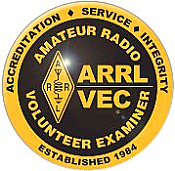 components -- following social distancing protocols," ARRL Volunteer Examiner Coordinator (VEC) Manager Maria Somma, AB1FM, said. "We have been receiving interesting and innovative suggestions, and we appreciate the dedication and ingenuity our examiners have shown."
components -- following social distancing protocols," ARRL Volunteer Examiner Coordinator (VEC) Manager Maria Somma, AB1FM, said. "We have been receiving interesting and innovative suggestions, and we appreciate the dedication and ingenuity our examiners have shown."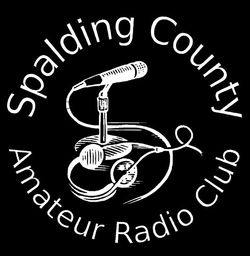 The Georgia club obtained ARRL VEC approval to administer video-supervised exams. "We have started with testing just one candidate at a time, but are planning to ramp up to multiple candidates -- probably two or three -- simultaneously," club member David Robinson, K4WVZ, told ARRL. "Before we do that, we want a few more single sessions under our belt and a few more Video VEs trained."
The Georgia club obtained ARRL VEC approval to administer video-supervised exams. "We have started with testing just one candidate at a time, but are planning to ramp up to multiple candidates -- probably two or three -- simultaneously," club member David Robinson, K4WVZ, told ARRL. "Before we do that, we want a few more single sessions under our belt and a few more Video VEs trained." We are working with the software developer of the exam delivery system to help them adapt the system for video-supervised testing."
We are working with the software developer of the exam delivery system to help them adapt the system for video-supervised testing."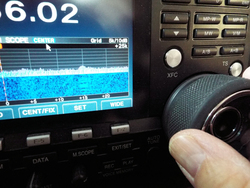 Monitor Coordinator (VMC). He was brought aboard to get the program up and running, and ARRL will eventually take over the VMC function.
Monitor Coordinator (VMC). He was brought aboard to get the program up and running, and ARRL will eventually take over the VMC function.-1th(1).jpg)
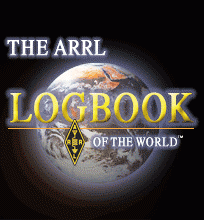 example. TQSL uses ADIF file data for cross-checks that help to keep inaccurate or incomplete information from contaminating the LoTW database, and that's where some user issues have arisen. For example, the OPERATOR field, which should be a call sign, sometimes shows up as a name. Occasionally, operators have reversed their ITU and CQ zones. Another issue is in the MY_STATE field, which should show a US Postal Service two-letter state abbreviation. Anything else is a problem.
example. TQSL uses ADIF file data for cross-checks that help to keep inaccurate or incomplete information from contaminating the LoTW database, and that's where some user issues have arisen. For example, the OPERATOR field, which should be a call sign, sometimes shows up as a name. Occasionally, operators have reversed their ITU and CQ zones. Another issue is in the MY_STATE field, which should show a US Postal Service two-letter state abbreviation. Anything else is a problem.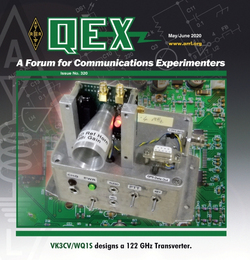 features ranging from construction projects to more advanced technical information in radio theory and practice. NCJ, published since 1973, targets radio amateurs active in radiosport. NCJ includes scores, technical articles, contributions from top contesters, and advice for beginners and seasoned radiosport enthusiasts alike.
features ranging from construction projects to more advanced technical information in radio theory and practice. NCJ, published since 1973, targets radio amateurs active in radiosport. NCJ includes scores, technical articles, contributions from top contesters, and advice for beginners and seasoned radiosport enthusiasts alike.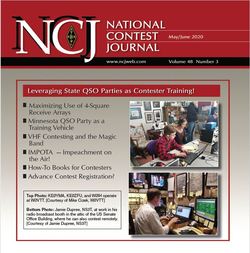 Members may not substitute a print subscription of QEX or NCJ as their delivered magazine member benefit. Print subscriptions of QEX and NCJ will continue to be available at additional cost for those who want to receive them.
Members may not substitute a print subscription of QEX or NCJ as their delivered magazine member benefit. Print subscriptions of QEX and NCJ will continue to be available at additional cost for those who want to receive them.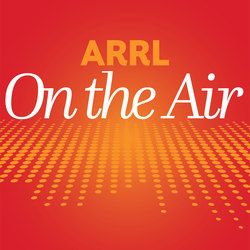 The latest episode of the On the Air podcast (Episode 4) focuses how to create a family emergency communications plan and includes an interview with Dino Papas, KL0S, about attaching coaxial connectors with crimping tools.
The latest episode of the On the Air podcast (Episode 4) focuses how to create a family emergency communications plan and includes an interview with Dino Papas, KL0S, about attaching coaxial connectors with crimping tools. The latest episode of the Eclectic Tech podcast (Episode 5) includes an interview with ARRL Laboratory Manager Ed Hare, W1RFI, about wireless power transfer technology, as well as a discussion of digital meteor scatter and an interview with Michael Lavelle, K6ML, about the new distance record at 122 GHz.
The latest episode of the Eclectic Tech podcast (Episode 5) includes an interview with ARRL Laboratory Manager Ed Hare, W1RFI, about wireless power transfer technology, as well as a discussion of digital meteor scatter and an interview with Michael Lavelle, K6ML, about the new distance record at 122 GHz.
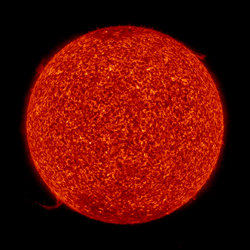 estimated planetary A index going from 6.6 to 6.1, and mid-latitude numbers went from 5.3 to 5.
estimated planetary A index going from 6.6 to 6.1, and mid-latitude numbers went from 5.3 to 5..jpg)
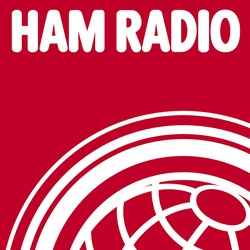 June 26 - 28. The event is Europe's major ham radio show, attracting some 15,000 visitors from around the world each summer, including a contingent from ARRL. This year's show would have been the 45th HAM RADIO.
June 26 - 28. The event is Europe's major ham radio show, attracting some 15,000 visitors from around the world each summer, including a contingent from ARRL. This year's show would have been the 45th HAM RADIO. Bauer said. "Each one of us, around the globe, is dealing with the COVID-19 virus in one way or another. And the situation in each location is changing rapidly."
Bauer said. "Each one of us, around the globe, is dealing with the COVID-19 virus in one way or another. And the situation in each location is changing rapidly.".jpg)
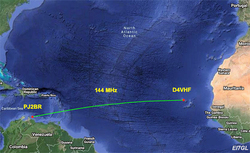 The claimed transatlantic record on 2 meters has been extended to nearly 4,760 kilometers (2,951 miles). "The incredible tropo conditions between Cape Verde Islands and the Caribbean continue to amaze with transatlantic contacts on 144 MHz and 432 MHz being made," John Desmond, EI7GL, said in a
The claimed transatlantic record on 2 meters has been extended to nearly 4,760 kilometers (2,951 miles). "The incredible tropo conditions between Cape Verde Islands and the Caribbean continue to amaze with transatlantic contacts on 144 MHz and 432 MHz being made," John Desmond, EI7GL, said in a .jpg) Amateur radio operators affiliated with the American Red Cross will conduct a nationwide communication drill on May 30. The drill will simulate the types of message traffic that are typical of a national disaster response, such as a hurricane or wildfire. Hams will utilize digital modes to move a variety of Red Cross data, with special focus given to methods that do not require infrastructure, such as a repeater or the internet. The drill features a local option where ARES organizations can work with local Red Cross chapters to drill local and regional functionality. For more information,
Amateur radio operators affiliated with the American Red Cross will conduct a nationwide communication drill on May 30. The drill will simulate the types of message traffic that are typical of a national disaster response, such as a hurricane or wildfire. Hams will utilize digital modes to move a variety of Red Cross data, with special focus given to methods that do not require infrastructure, such as a repeater or the internet. The drill features a local option where ARES organizations can work with local Red Cross chapters to drill local and regional functionality. For more information, 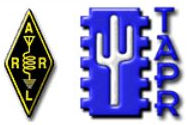 The ARRL/TAPR Digital Communications Conference (DCC) will be held online this year, due to the coronavirus pandemic. Originally planned for Charlotte, North Carolina, the 2020 ARRL-TAPR DCC will take place as an online virtual conference on the same dates, September 11 - 13. Details of the virtual DCC will be announced in the coming months as event plans are finalized. Plans call for holding the 2021 DCC in Charlotte.
The ARRL/TAPR Digital Communications Conference (DCC) will be held online this year, due to the coronavirus pandemic. Originally planned for Charlotte, North Carolina, the 2020 ARRL-TAPR DCC will take place as an online virtual conference on the same dates, September 11 - 13. Details of the virtual DCC will be announced in the coming months as event plans are finalized. Plans call for holding the 2021 DCC in Charlotte.







